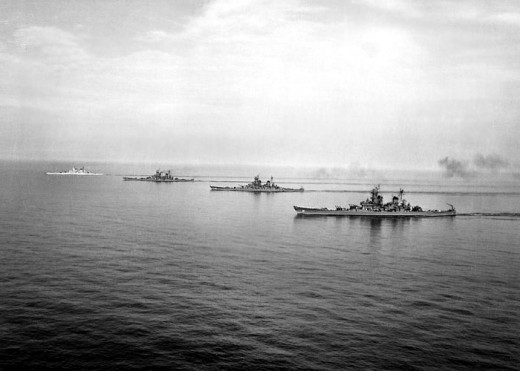I don’t really disagree with anything you’ve said. I may have quibbles here and there, but that’s probably at least as much due to my enjoyment of the role of Devil’s Advocate as anything more serious.
One point I will emphasize, though: It’s worth remembering, as you point out, that Bismark did phenomenally well putting ordinance on target. Nor was that simply a trait of that ship - the sinking of HMS Glorious by Scharnhorst and Gneisenau began with hits at a range of just over 24,000 meters.
I’m not much of a fan of Yamato. While she was an impressive and beautiful vessel, I am inclined to discount her as a warship for some serious flaws: the relative lack of effective AAA being the largest. (Yeah! You can use your main battery for AA fire with giant shotgun shells, but you’re still looking at a horrid rate of fire for that, which does little to provide effective AA fire.) For the IJN, of all people, to ignore the threat of air power is taking irony to new levels.
Further, one of the things about damage control is that a ship’s design counts a lot, but even more what counts is the skill and determination of the ship’s crew to fight that damage. Bismark’s crew did very well there, dealing with both the damage from the Battle of Denmark Strait, and latter in her final engagement. It’s hard to say how well Yamato’s crew did in the pounding she took, but looking at her near sister Shinano’s fate, I think that there’s room to question how effectively Yamoto’s crew would have been able to deal with damage.
You take that back! ![]()
More seriously, for the Kriegsmarine, I agree that the push for the very limited number of major surface combatants was a poor decision from the standpoint of effective use of materials. Hell’s bells, even had the famous Graf Zeppelin been completed, and allowed to have an air wing, it too would have been too little, too late. Even at the time that Bismark was laid down that seems to me as through it should have been obvious that the Kriegsmarine could not face the Royal Navy on their terms and come out ahead. For that matter, sending out a battleship, be she ever so fast, to raid merchant shipping seems a colossal waste.
I’m less convinced that, at the time they were laid down, the IJN was making a mistake to build battleships instead of more fleet carriers, or submarines.
First, because the IJN never did use their submarine forces effectively. And equal tonnage of submarines for the IJN would not have added anything to the Japanese war effort, because the will to use them as effective combatant vessels just wasn’t there. For a number of reasons, including the Japanese fetishism of the military junta’s interpretation of Bushido, it wasn’t consider proper fighting to consider unrestricted submarine warfare as a strategic operational stance. My understanding is that the Japanese used their submarines more for reconnaissance, and attacks on US warships. The loss of Yorktown and Wasp to submarine attacks were very painful - but were not enough, by themselves, to do much beyond slow US operations.
Secondly, because the IJN did have a battleship fleet, they could actually meet other battleship forces head to head, and did so. Furthermore, while the carrier group was hugely effective in WWII, it was not an unassailable superiority. HMS Glorious is a good example of what happened when a carrier force gets cocky around major surface combatants. There weren’t many battleship on battleship fleet actions in the Pacific, but they did happen, and were pivotal battles
Of course, the most pivotal battleship action I can think of now, is one where the IJN failed to follow up on catching a carrier and amphibious force without adequate cover. That the IJN’s force estimates were so far off as to allow Kurita to be bluffed off by destroyer escorts doesn’t change that the Battle off Samar had every potential to have been a major strategic victory for the IJN, as well as a tactical victory.
Obviously, the conversion of the incomplete Shinano to a fleet carrier configuration emphasizes that after Midway the IJN agreed with you that they needed to rebuild their fleet carrier arm.
One imponderable, however, is to consider to what degree both the Reich and the Japanese junta used such prestige projects to solidify support and morale within their nations as a whole. It’s comparatively easy to compare and contrast military effectiveness of a warship. There is room for debate, of course, but at least you can point to easily quantified characteristics, and then start to debate their importance from there. Trying to do the same for something so amorphous as support for the government or civilian morale is getting into the same sort of territory as trying to debate the number of angels who may dance on the head of a pin.


